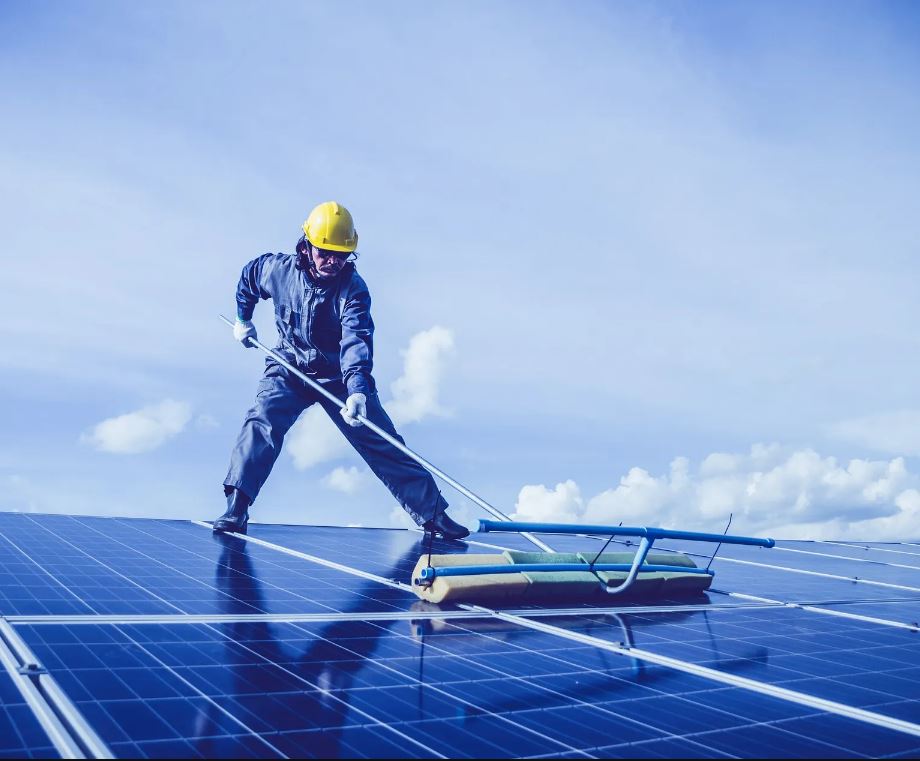How to Keep Your Solar Panels Safe from Birds: A Complete Guide
Solar panels are a smart investment for homeowners looking to reduce energy costs and lower their carbon footprint. However, one common problem that solar panel owners face is bird interference. Birds, especially pigeons and sparrows, often nest under solar panels, causing damage, reducing efficiency, and creating unsanitary conditions.
If you’re struggling with birds around your solar panels, this comprehensive guide will help you protect your investment. We’ll cover:
- Why Birds Are Attracted to Solar Panels
- Problems Caused by Birds Nesting Under Solar Panels
- Effective Ways to Keep Birds Away from Solar Panels
- DIY vs. Professional Solutions
- Maintenance Tips to Ensure Long-Term Protection
- Legal and Ethical Considerations
By the end of this article, you’ll have all the knowledge you need to safeguard your solar panels from birds effectively.
[ruby_related heading=”More Read” total=3 layout=1 offset=5]
1. Why Are Birds Attracted to Solar Panels?
Birds, particularly pigeons, sparrows, and starlings, find solar panels an ideal spot for nesting and roosting. Here’s why:
A. Shelter and Protection
Solar panels are typically installed a few inches above the roof, creating a perfect sheltered space that protects birds from predators and harsh weather.
B. Warmth
Solar panels absorb heat, making the space underneath them warm and cozy—ideal for birds, especially in colder months.
C. Height Advantage
Birds prefer high places to build nests because it keeps them safe from ground predators.
D. Easy Access to Food
If your property has gardens, bird feeders, or open trash bins, birds will naturally be drawn to your roof and solar panels.
Understanding why birds choose your solar panels helps in implementing the right deterrent strategies.
2. Problems Caused by Birds Nesting Under Solar Panels
While birds may seem harmless, their presence under solar panels can lead to several issues:
A. Reduced Energy Efficiency
Bird droppings, nesting materials, and debris can accumulate on the panels, blocking sunlight and reducing energy output by up to 30%.
B. Physical Damage
Birds peck at wiring, scratch surfaces, and dislodge connections, leading to costly repairs.
C. Fire Hazards
Dry nesting materials near electrical wiring can pose a fire risk.
D. Health Risks
Bird droppings contain harmful bacteria like Salmonella and E. coli, which can spread through the air or contaminate water runoff.
E. Increased Maintenance Costs
Regular cleaning and repairs due to bird damage can add up over time.
Given these risks, it’s crucial to take preventive measures.
3. Effective Ways to Keep Birds Away from Solar Panels
There are several bird deterrent methods available, ranging from physical barriers to visual and sound-based solutions.
A. Physical Barriers (Most Effective)
1. Solar Panel Mesh or Wire Mesh
- A stainless steel or plastic mesh is installed around the edges of the panels to block birds from entering.
- Pros: Long-lasting, humane, and highly effective.
- Cons: Requires professional installation in most cases.
2. Bird Spikes
- Plastic or metal spikes are placed along the edges of solar panels to prevent birds from landing.
- Pros: Non-harmful, durable, and low-maintenance.
- Cons: May not stop smaller birds from squeezing through.
3. Solar Panel Guards (Perimeter Clipping)
- These are specially designed clips that seal the gaps around solar panels.
- Pros: Discreet and effective.
- Cons: Must be installed correctly to avoid gaps.
B. Visual and Sound Deterrents
1. Reflective Tape or Decoys
- Shiny objects like reflective tape or fake predators (owls, hawks) can scare birds away.
- Pros: Cheap and easy to install.
- Cons: Birds may get used to them over time.
2. Ultrasonic Repellers
- Emit high-frequency sounds that disturb birds but are inaudible to humans.
- Pros: Non-invasive and covers a wide area.
- Cons: Effectiveness varies; some birds may adapt.
C. Natural Deterrents
1. Predator Scents
- Spraying natural predator scents (like coyote urine) can discourage birds.
- Pros: Chemical-free.
- Cons: Needs frequent reapplication.
2. Motion-Activated Sprinklers
- Sprays water when birds approach.
- Pros: Humane and effective.
- Cons: Requires a water source and may not work in freezing temperatures.
D. Habitat Modification
1. Remove Food Sources
- Secure trash bins, clean up fallen fruits, and avoid leaving pet food outside.
2. Install Alternative Nesting Spots
- Provide birdhouses away from solar panels to divert them.
4. DIY vs. Professional Solutions
A. DIY Methods
- Best for: Small-scale problems, budget-conscious homeowners.
- Options: Reflective tape, decoys, basic mesh installations.
- Limitations: May not provide a permanent solution.
B. Professional Installation
- Best for: Severe infestations, large solar arrays.
- Options: Custom mesh barriers, electric deterrents, full perimeter sealing.
- Advantages: Long-term protection, warranty-backed solutions.
If you’re unsure, consult a solar panel maintenance expert or pest control specialist.
5. Maintenance Tips to Ensure Long-Term Protection
Even after installing deterrents, regular maintenance is key:
✔ Inspect panels monthly for signs of nesting or damage.
✔ Clean panels every 3-6 months to remove droppings and debris.
✔ Check mesh barriers for gaps or wear and tear.
✔ Trim nearby trees to reduce bird access to the roof.
6. Legal and Ethical Considerations
Before taking action, remember:
- Protected Species: Some birds (e.g., eagles, migratory species) are protected by law. Harming them can result in fines.
- Humane Methods: Always use non-lethal deterrents to avoid unnecessary harm.
Check local wildlife regulations before implementing bird control measures.
Final Thoughts
Birds can cause significant damage to solar panels, but with the right strategies, you can protect your investment. Physical barriers like mesh and spikes are the most effective, while visual and sound deterrents can supplement your efforts. Regular maintenance and professional help ensure long-term success.
By taking proactive steps, you’ll keep your solar panels efficient, safe, and bird-free for years to come!
Have You Faced Bird Problems with Your Solar Panels?
Share your experiences and solutions in the comments below!






